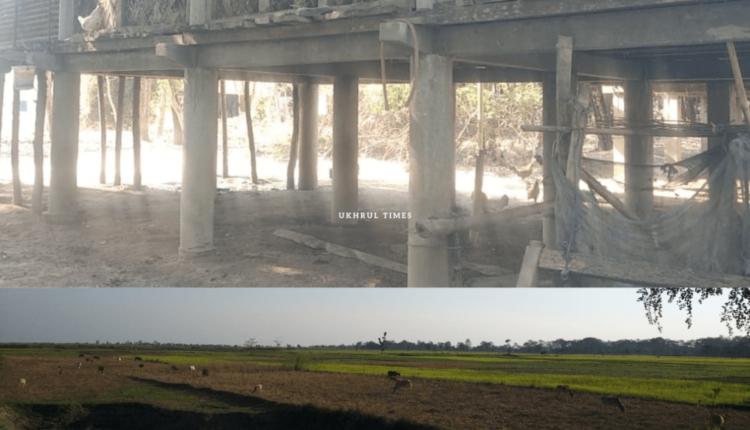
Living with floods: Dhemaji District Assam
This story first appeared in Ukhrul Times
Imagine living with floods for six months in a year! This is a reality for the people of Dhemaji District in Upper Assam. Floods have become a part and parcel of their lives for decades now. They have no option but to adapt to living with floods which they cannot escape owing to the geographical location of the district. As many as 26 tributaries, all originating from Arunachal Pradesh, run through the district. Some of them are Jiadhal, Gainodi, Dikhari, Dihang, Dimow, Simen and Subansiri, which is the biggest tributary. These rivers overflow during rainy seasons and inundate 60 to 70 per cent of the total areas of Dhemaji district every year.
The Director of Rural Volunteer Centre, an organisation aimed at building community resilience in the flood-prone area of Dhemaji, Luit Goswami, said the district started witnessing major floods in the 1980s and it has become worse since then owing to global climate change. As many as three flood waves hit Dhemaji District in 2022, affecting over 100,000 people, including 30,000 children. I got an opportunity to visit two of the most affected villages in the district as a delegate for South Asian Women in Media (SAWM) on a recent trip under the UNICEF Assam-supported risk-Adapted Program.
It was heart wrenching to listen to their woes brought on by the forces of nature. The first village we visited was Medhipamua, which is inhabited mostly by the people of the Mising Tribe, and the second village was Junai. I met the villagers in the dry season when they were in lighter hearts. Their hospitality was vivid when they received us with their beautiful hand-crafted colourful traditional stoles.
Seasonal displacement is observed among the villagers, as most male members move to cities to earn income while the female members stay behind. “I miss my son and want him to stay here with me but I cannot do that because there is nothing here”, says a mother. Villagers said water and sanitation are the two major issues facing them in times of floods. In order to prevent water from entering their homes, villagers have constructed raised houses on high foundations. They have also constructed higher platforms to house relief camps for them to stay in during floods. Each year, relief camps spring up to accommodate a large number of families for extended periods of time until the water recedes. Despite the challenges, they have thrived; these villagers have built resilience over the years and adapted to the situation at Hand, says Goswami.
Local Panchayats, PHED, RVC and UNICEF have converged to help these villagers adapt to their environment. Based on the traditional ingenuity of building houses on high foundations, villagers have built higher platforms to house relief camps, raised water hand-pumps to provide safe water and raised toilets to ensure sanitation in times of floods. Goswami says they have built 51 such converged structures in 3 years. As most of these villages have almost transformed into virtual deserts due to siltation from floods, paddy cultivation has become challenging. Villagers are now turning towards cultivation of rabi and cash crops like mustard, potato, green peas, garlic, and french beans, which are less time-consuming and economically more viable. A villager said the Bogibeel bridge, connecting Dhemaji and Dibrugarh, has brought in traders from Tinsukia, Dibrugarh, Jorhat and Nagaland to collect their produce.
We cannot change the course of nature. Coming up with new ideas and finding ways to mitigate situations at hand is the best we can do. Convergence of the locals, organizations and authorities and most of all the resilience of these inhabitants are definitely something we can promote.
